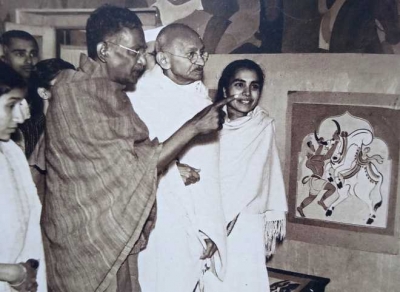
The original Constitution of India, adopted on 26 January 1950, was not a printed document. It was entirely handcrafted by the artists of Shantiniketan under the guidance of Acharya Nandalal Bose, with the calligraphy texts done by Prem Behari Narain Raizada in Delhi.
His genius and original style were recognized by famous artists and art critics like Gaganendranath Tagore, Ananda Coomaraswamy and O. C. Ganguli. These lovers of art felt that objective criticism was necessary for the development of painting and founded the Indian Society of Oriental Art.
He became principal of the Kala Bhavana (College of Arts) at Tagore’s International University Santiniketan in 1922.
He was also famously asked by Jawaharlal Nehru to sketch the emblems for the Government of India’s awards, including the Bharat Ratna and the Padma Shri. Along with his disciple Rammanohar, Nandalal Bose took up the historic task of beautifying/decorating the original manuscript of the Constitution of India.
He died on 16 April 1966 in Calcutta.
Today, the National Gallery of Modern Art in Delhi holds 7000 of his works in its collection, including a 1930 black and white linocut of the Dandi March depicting Mahatma Gandhi, and a set of seven posters he later made at the request of Mahatma Gandhi for the 1938 Haripura Session of the Indian National Congress.
In 1956, he became the second artist to be elected Fellow of the Lalit Kala Akademi, India’s National Academy of Art. In 1954, Nandalal Bose was awarded the Padma Vibhushan.
Picture Credit : Google
